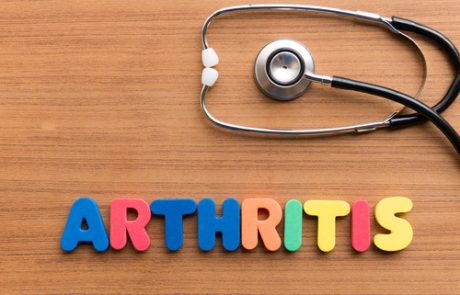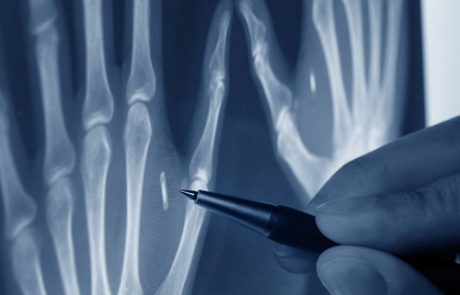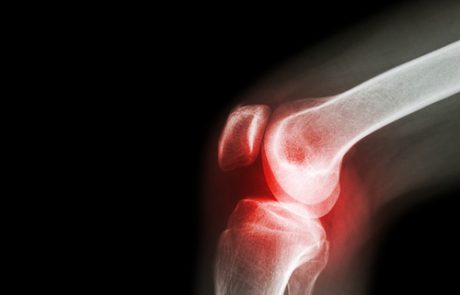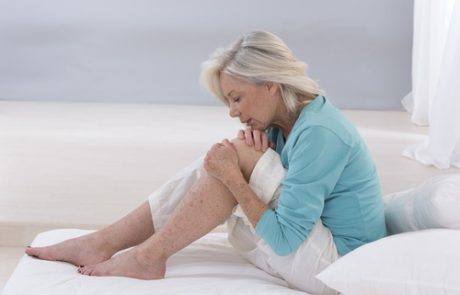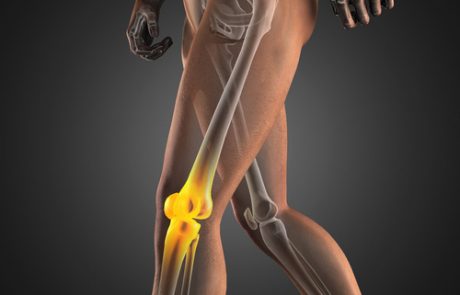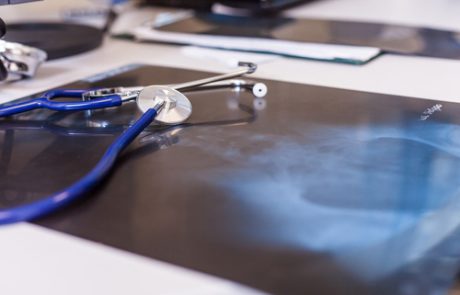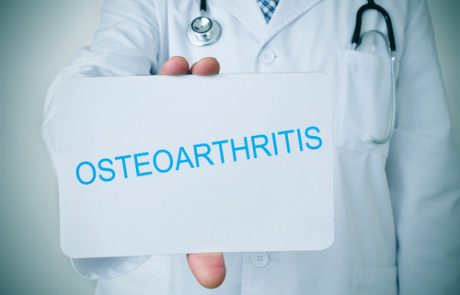Diseases & Conditions
The Spine: Cervical (Neck) and Lumbar (Back)
Each segment of your spine is crucial to the well being of your entire spine and spinal cord since each part’s strength depends on the other vertebrae and discs to function properly. Constant stress, repetitive or acute injuries and various conditions, such as arthritis, can cause pain.
Pinpointing the source of your pain is key
Pinpointing the source of your pain and understanding your problem are the keys to eliminating pain and restoring function. Using the latest technology, our highly trained team of spine and pain management specialists are experts in diagnosing spinal conditions, from a herniated or bulging disc to degenerative disc disease, deformity, spinal stenosis, spondylosis, scoliosis, spondylolisthesis, spinal fractures, infection, spinal tumors and osteoporosis, among others. Learn about these conditions and their symptoms below, based on information from the American Academy of Orthopedic Surgery.

Arthritis is a general term for joint pain, which has many causes. In the following text, we will primarily refer to the age-related form of arthritis called degenerative arthritis or osteoarthritis.
Spondylosis is used to describe arthritis seen on x-ray, but in a patient without symptoms. The term arthosis is used when degenerative arthritis is seen in an x-ray, but the patient has no pain.
Over time, daily motion and minor injuries put stress on the spine, creating wear and tear on the intervertebral discs, causing them to degenerate. The discs function like shock absorbers that act as a cushion during the body’s movement, keeping the spine flexible. Their role is vital to preserving the vertebrae since bones cannot sustain repeated stress without damage.
In a healthy intervertebral disc, the soft, spongy center (nucleus pulposus) contains a high level of water content that allows it to absorb stress. When excessive pressure or impact is incurred by the disc, the tough outer ligament material that surrounds the nucleus (annulus fibrosis) is often the first portion of the disc to exhibit damage. Small tears in the annulus fibrosis are replaced with scar tissue as the body tries to heal itself. However, the scar tissue is not as strong as the normal annulus fibrosis and weakens the annulus. As the annular fibrosis degenerates, the nucleus pulposus begins to loose water, causing it to dry up. If the annulus fibrosis becomes weak enough, the disc material can cause the annulus fibrosis to bulge (i.e. bulging disc) or rupture, i.e. herniated nucleus pulposus (HNP).
As a result of water loss, the disc loses its ability to absorb stress and act as a cushion for spinal flexibility. This situation creates more stress, and the damage cycle repeats, further tearing the annulus and causing the nucleus to collapse. As the disc compresses, the space between the vertebrae above and below it narrow. As the area becomes constricted, the facet joint at the back of the spine can move out of position, rendering the joint less operable. The facet joints become arthritic.
In addition to the lack of joint facilitation, bone spurs (osteophytes) may form around the disc space and the facet joint to impede excessive motion to the damaged spine area. If the bone spurs grow into the spinal canal and press on the spinal cord and nerves, they can crowd the spine, a condition known as spinal stenosis.
IVD
Intervertebral Disc
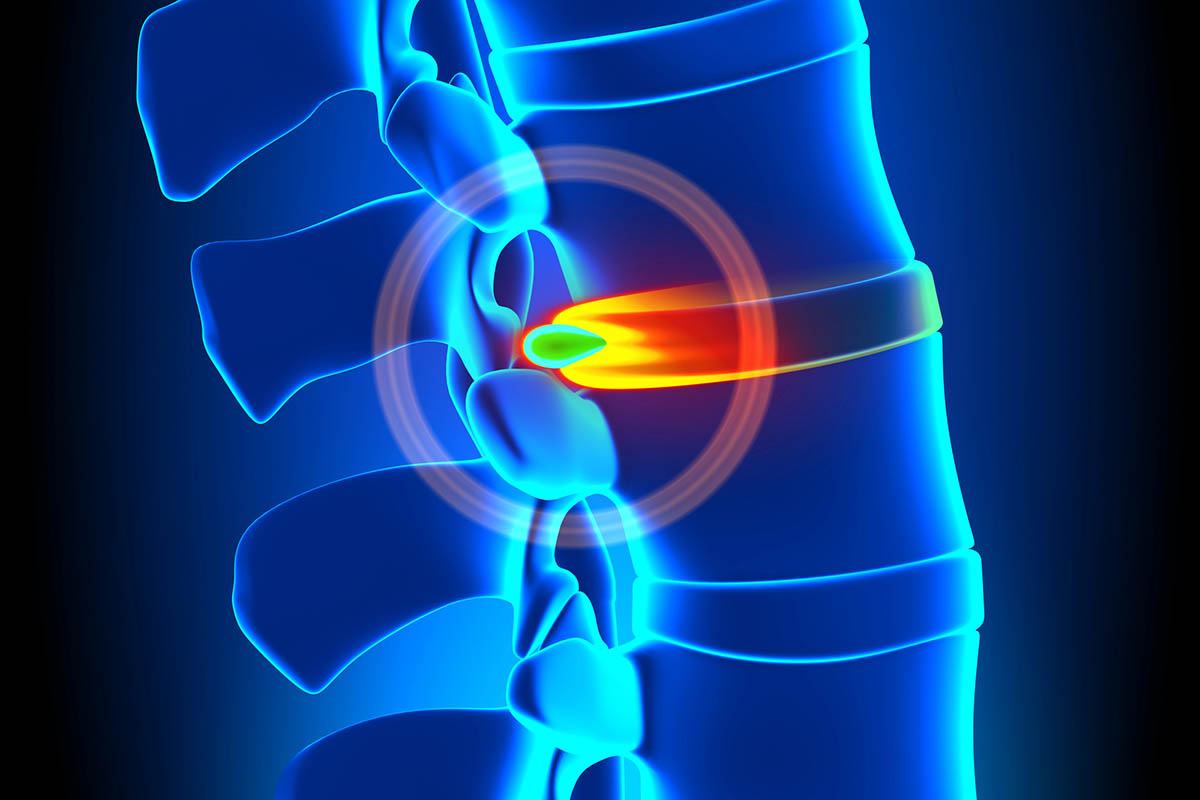
A bulging disc forms when the soft, spongy center of the disk (nucleus pulposus) pushes out and puts pressure on the outer surrounding fibrous ligament (annulus fibrosis). Unlike a herniated disc, the bulging disc still contains the nucleus material.
Bulging most often happens as the body ages and the intervertebral discs degenerate. Having a bulging disc is not necessarily a serious concern, and it may or may not be a source of back pain and/or leg pain.
Disc herniation is a rupture of fibrocartilagenous material (annulus fibrosis) that surrounds the intervertebral disc. This rupture involves the release of the disc’s center portion containing a gelatinous substance (nucleus pulposus). Pressure from the vertebrae above and below may cause the nucleus pulposus to be forced outward, placing pressure on the spinal nerves, and may cause considerable pain and damage to the nerves. This is called herniated nucleus pulposus (slipped disc, prolapsed disc or ruptured disc).
This condition can occur in both the cervical spine (neck) and lumbar spine (low back). It is more common in the lumbar spine (low back). In the cervical spine (neck), the herniated nucleus pulposus may cause neck pain and/or upper extremity symptoms. In the lumbar spine (low back), it may cause low back and/or lower extremity symptoms. It can rarely occur in the thoracic spine (upper/middle back), creating (radiating) pain to the chest or belly, heart, lung, GI, kidney as well as other musculoskeletal causes and should be evaluated.
A pinched or compressed nerve (also called radiculopathy) occurs when too much pressure is applied to a nerve by surrounding tissues (bones, cartilage or IVD material). This pressure disrupts the nerve’s function, causing pain, tingling, numbness or weakness. When a pinched nerve occurs in the neck and causes upper extremity pain or loss of function, it is also called cervical radiculopathy. When the pinched nerve occurs in the lumbar (low back) area and causes lower extremity pain and/or loss of function, it is called lumbar radiculopathy and may be called sciatica.
Sciatica refers to pain or discomfort associated with the nerve roots that comprise the sciatic nerve. This nerve runs from the lower part of the spinal cord, down the back of the leg, to the foot. Injury to or pressure on the sciatic nerve can cause the characteristic pain of sciatica: a sharp or burning pain that radiates from the lower back or hip, possibly following the path of the sciatic nerve to the foot and toes.
Myelopathy of the Cervical Spine (Neck)
Cervical myelopathy is when the disc material (herniated nucleus pulposus) or other soft tissue material presses on the spinal cord to produce symptoms that may produce both upper and lower extremities symptoms, it is called cervical myelopathy.
Understanding Back & Neck Fractures
Other Conditions of the Spine
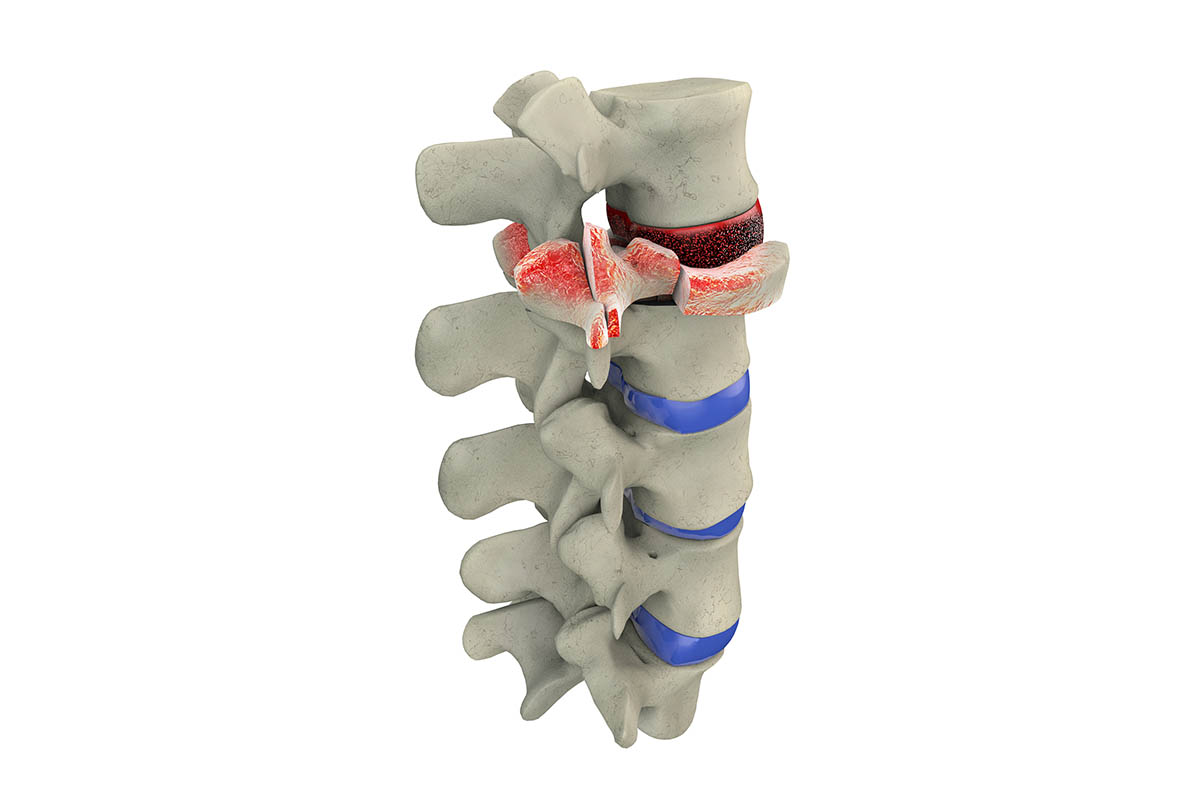
Spinal fractures can vary widely in severity. While some fractures are very serious and require emergency treatment, others can occur in bones weakened by osteoporosis.
Thoracic (Middle) and Lumbar (Lower Spine) Fractures
Most spinal fractures occur in the thoracic (middle back) and lumbar spine (lower back) or at the connection of the two (thoracolumbar junction). Treatment depends on the severity of the fracture and whether the patient has other associated injuries. Thoracic and lumbar spine fractures may result from high-energy trauma, such as a:
- Car or motorcycle crash
- Fall from height
- Sports accident
- Violent act, such as a gunshot wound
Many times, these patients have additional serious injuries that require rapid treatment. The spinal cord may also be injured, depending on the severity of the fracture.
Spinal fractures may also be caused by bone insufficiency. For example, people with osteoporosis, tumors, or other underlying conditions that weaken the bone can fracture a vertebra even during low-impact activities, such as reaching or twisting. These fractures may develop unnoticed over a period of time, with no symptoms or discomfort until a bone breaks.
Cervical (Neck) Fractures
The seven bones in the neck (cervical vertebrae) support the head, connecting it to the thoracic spine (upper/middle back). A fracture in one of these cervical vertebrae is often called a broken neck. Cervical fractures usually result from high-energy trauma, such as automobile crashes or falls, and athletes are also at risk. For example, a cervical fracture can occur when a:
- Football player “spears” an opponent with his head.
- Gymnast misses the high bar during a release move and falls.
- Diver strikes the bottom of a shallow pool.
Any injury to the vertebrae can have serious consequences because the spinal cord, the central nervous system’s connection between the brain and the body, runs through the center of the vertebrae. Damage to the spinal cord can result in temporary or permanent total paralysis from the neck down or death.
Osteoporosis is a thinning of the bones, causing them to become porous and fragile and more prone to fracture. Aging increases the risk of osteoporosis, which affects more women than men and progresses more quickly after menopause. Most people don’t know they have osteoporosis until they have a fracture, most often in the hip, spine or wrist.
The pain associated with this type of fracture is frequently dismissed as general back pain. If there is persistent pain associated with the fracture(s), there are medical and surgical options.
The good news is that osteoporosis can be treated or even prevented with good medical management.
Spondylolysis is a crack or stress fracture in one of the vertebrae, the small bones that make up the spinal column. In some cases, the stress fracture weakens the bone so much that it is unable to maintain its proper position in the spine—and the vertebra starts to shift or slip out of place. This condition is called spondylolisthesis.
For most patients with spondylolysis and spondylolisthesis, back pain and other symptoms will improve with conservative treatment. This always begins with rest from sports and other strenuous activities.
Ankylosing Spondylitis (AS) is in the family of rheumatoid disease. It is a progressive arthritis that creates chronic inflammation of the spine and sacroiliac joints, the two joints that connect the spine and the pelvis. Initially, inflammation occurs in the sacroiliac joints and then progresses to the spine, causing stiffening and restricted movement.
With long-term inflammation of the spinal joints (spondylitis), calcium deposits form in the ligaments around the intervertebral discs that cushion the vertebrae and in the ligaments that hold the vertebrae together. As the ligaments calcify, movement and flexibility become severely impaired.
The disease can progress to the point of fusing the vertebrae together (ankyloses). As a result of AS, the vertebrae become brittle, causing the spine to lose mobility and be prone to fractures. AS is a systemic disease that not only affects the joints, spinal ligaments and bones, but also the body’s organs.
Scoliosis is an abnormal side-to-side curvature of the spine. It most often develops in adolescents but can also develop result from aging or arthritis. Conditions other than scoliosis can cause a change in the spine’s normal shape, resulting in spinal deformity.
Frequently Asked Questions
Does scoliosis run in families?
Yes, approximately 30% of adolescent idiopathic scoliosis patients have a family history of scoliosis. According to recent research, about one third of children whose parents have scoliosis will develop it.
How serious is adolescent scoliosis?
Adolescent scoliosis is not life threatening, and most curves do not cause serious problems. Children with scoliosis can have normal active lives, including sports participation.
If the curve gets progressively larger, it can cause heart and lung problems. A very severe curve can also compress nerves or the spinal cord, which can result in paralysis, though this is rare. Proper treatment can prevent the curve from progressing to this degree.
Can scoliosis curves improve without treatment?
Some very small idiopathic scoliosis curves may improve without treatment but this is uncommon. Many children with slight curves do not need treatment and will grow up to lead normal lives. However, their small curves will remain.
If larger curves are not treated, the best hope is that they will not worsen. Curves in children who are almost fully grown may stop getting worse.
What can be done to prevent scoliosis from getting worse?
Bracing and surgery are the only treatments that have been shown to effectively treat idiopathic scoliosis.
How early should children be screened for scoliosis?
The Scoliosis Research Society recommends that girls be screened at ages 10 and 12, and that boys are screened once at age 13 or 14 years old. Idiopathic scoliosis is more commonly detected during these years during a child’s growth spurt. Parents can help by looking at their child’s back while the child is wearing a bathing suit. If one shoulder appears higher than the other or one side of the ribcage sticks out more than the other side, then call your pediatrician for an evaluation.
What is the difference between adult and adolescent scoliosis?
Adolescent scoliosis occurs in children 10 to 18 without cause. Patients rarely feel pain because of the scoliosis itself.
Unlike adolescent idiopathic scoliosis, degenerative scoliosis has a known cause: the deterioration of the facet joints in the back due to aging. The inflammation of the degenerating facet joints is the cause of pain, not the curve, which typically progresses slowly (one to two degrees per year). Therefore, treatment is centered on relieving the pain rather than slowing the curve.
Cancer can affect the spine. While there are different types of spinal tumors, most spread from another part of the body to the spine. Symptoms include:
- Neck or back pain, followed by arm or leg weakness or numbness or a change in bowel or bladder habits
- Severe pain when there is direct compression of the affected area
- Pain that does not lessen with rest and may be worse at night
- Back pain accompanied by appetite loss, weight loss, nausea, vomiting, fever, chills or shakes

